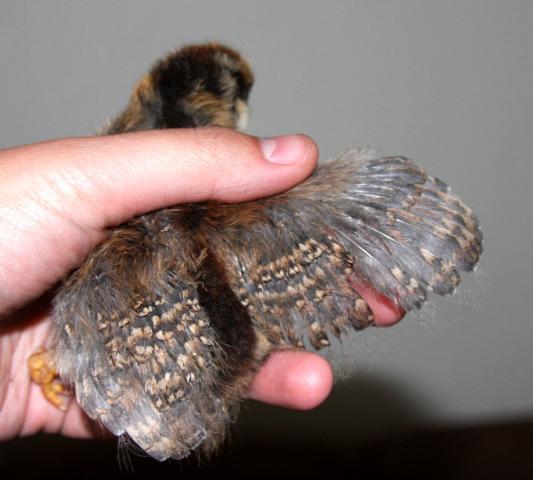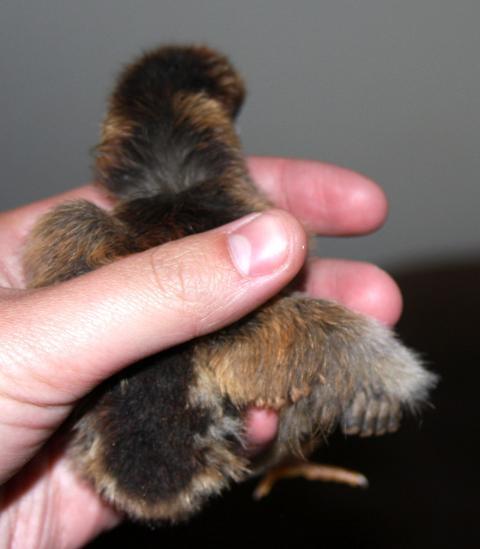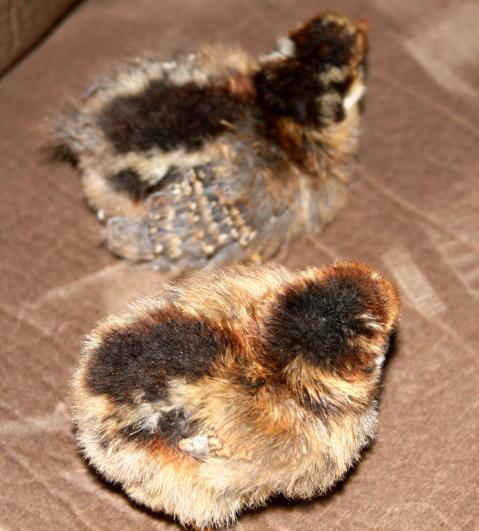Hello guys.
So I was playing with my week old BLRW babies, 3 of which are feathering out pretty fast, but one baby has little tiny wings, with barely any feathering. Is this a deformity, or maybe a roo? I heard Roo's feather out more slowly than pullets.
Normal Chick

stubby Wing Chick

Both side by side. Stubby in front.

So I was playing with my week old BLRW babies, 3 of which are feathering out pretty fast, but one baby has little tiny wings, with barely any feathering. Is this a deformity, or maybe a roo? I heard Roo's feather out more slowly than pullets.
Normal Chick

stubby Wing Chick

Both side by side. Stubby in front.

Last edited:



 I really like that one hes by far the cutest, but looks nothing like it's sister 1 week old but already has longer wings and started her tail feathers. Unfortunately where live they don't allow roosters
I really like that one hes by far the cutest, but looks nothing like it's sister 1 week old but already has longer wings and started her tail feathers. Unfortunately where live they don't allow roosters  I've actually never heard of that.
I've actually never heard of that.